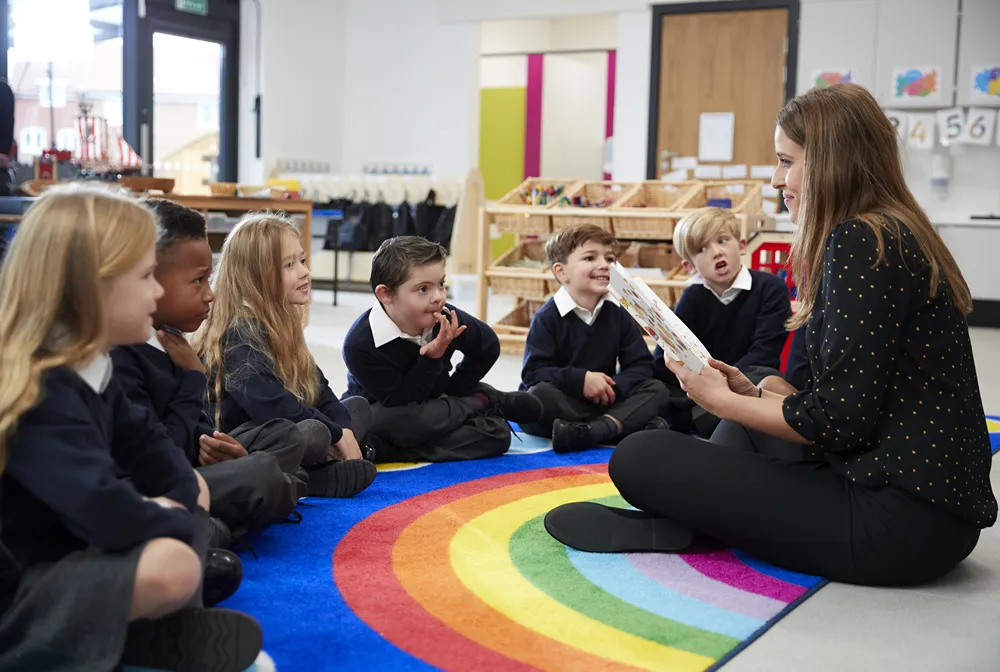The Foundation of a Great Classroom: Why Your Floor Matters Most
Right Classroom Rugs are essential, not optional. They play a visibly big role in classroom safety and management. This isn’t just an idea. Successful teachers report it every day. A cheap mat from a local store is just a piece of fabric. It slips. It wears out.
It might even contain harmful chemicals. True Classroom Rugs are different. They are specially designed and created for safety, built for learning and crafted to support the community.
Every part of a classroom from desks and chairs to rugs and shelves impacts safety and learning. Small details matter. When teachers focus on safety, children can explore, learn and thrive with fewer distractions and risks.
Why Safety is Non-Negotiable in Classrooms
Your students’ safety should always come first. The floor should be a safe zone, not a trouble spot. Normal rugs are dangerous.
They can slide on smooth floors and cause a fall. They can also have poison in them that you breathe. High-quality Classroom Rugs help protect children:
- These rugs will not slip. They have a strong grip on the bottom.
- They are safe and have no bad chemicals.
- They are made to last a long time. The edges are strong and the colors stay bright.
Look for classroom rugs like this. They are a safe and strong choice for your room.
From Morning Chaos to Morning Meeting
Getting 20 children to move from desks to group activities can be challenging. A dedicated rug creates instant structure which you can find every kind of option at booooom jackson. It acts as a visual anchor, signaling, “This is our space to come together.” This simple cue saves minutes each day, adding up to hours of teaching time over the year.
The right rug can also help with organization. For example, the Colorful Squares Classroom Rug provides each child with a designated spot. This eliminates arguments and teaches personal space. Organized spaces reduce accidents because children know exactly where to go.
Where a Classroom Becomes a Community
Desks are for independent work. Rugs are for connection. This is where students share stories, collaborate, and learn to listen. Circular designs, like the Doughnut Seating Classroom Rug, naturally pull students into focused groups and build a sense of belonging.
Safety isn’t just physical. It’s emotional too. Children who feel secure in a well organized space are more confident and more willing to participate.

Learning You Can Touch and See
Children learn best by doing many things. Educational rugs turn the floor into an interactive learning board, engaging kids visually, tactilely and physically.
- The Clouds Alphabet Sit Spots Rug makes the alphabet an adventure.
- The Fade-Resistant Black & White Planet Rug offers a mini solar system tour.
Rugs like these are active participants in lessons, helping students understand complex ideas more easily. Even small interactive elements enhance memory retention and attention.
A Rug That Reflects Your Classroom Style
Your classroom reflects your teaching style. The rug sets the tone.
- Want a calm, natural oasis? The Brown Leaf Classroom Educational Rug brings serenity indoors.
- Want a vibrant hub of energy? The Rainbow Classroom Play Rug fills your space with color and joy.
Selecting the right materials shows children that safety and learning matter. A safe classroom floor is an investment in well-being and education.
Other Classroom Safety Measures
Rugs are just one part of a broader safety strategy and contribute to enhances learning. Other important steps include:
- Furniture with rounded edges to prevent bumps.
- Shelving secured to walls to avoid tipping.
- Clear pathways free from clutter.
- Non slippery flooring materials beyond rugs.
- Proper ventilation and non-toxic paints.
Combining these measures with safe rugs ensures a secure and effective learning environment. It’s relaxing for parents and teachers too.
Your Next Step Toward a Safer Classroom
A classroom is more than a place to learn. It is a space where students can notice everything and explore the world. Small corners and simple setups can make kids curious. They help children discover new things.
When a room feels welcoming, kids want to join in. They try new things and learn to think on their own. Every time a child moves, watches, or tries something, they are growing.
A well-planned classroom helps kids be creative. It helps them feel confident and interested. It makes every student feel ready to learn and explore.












